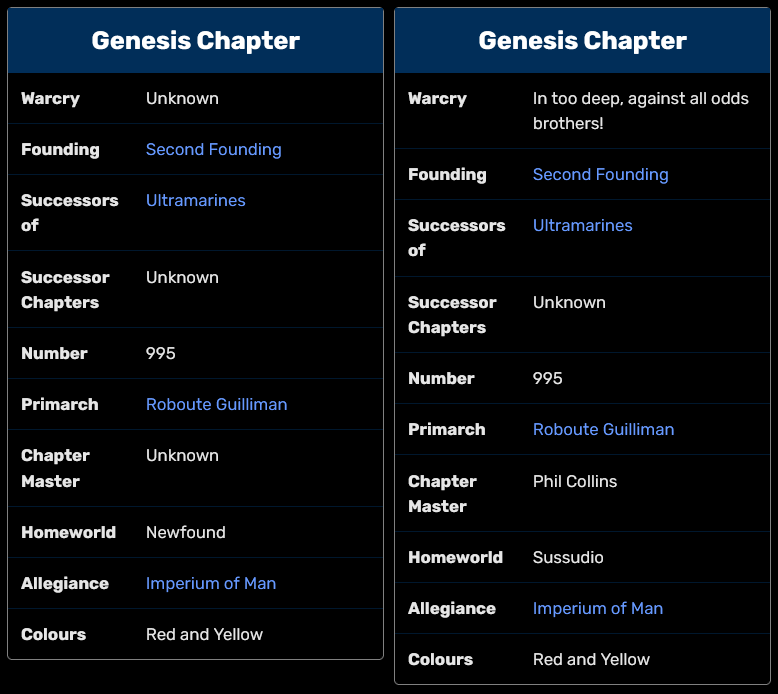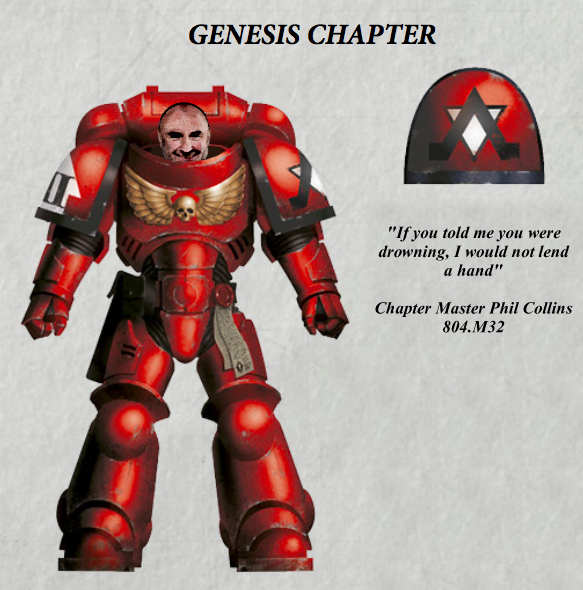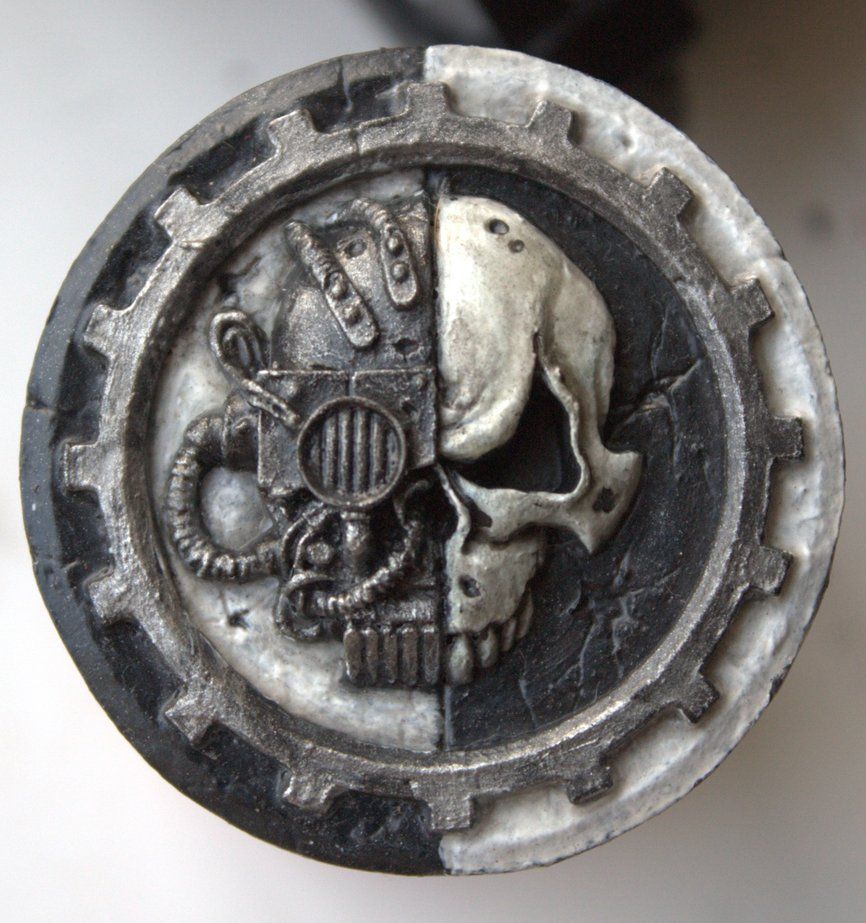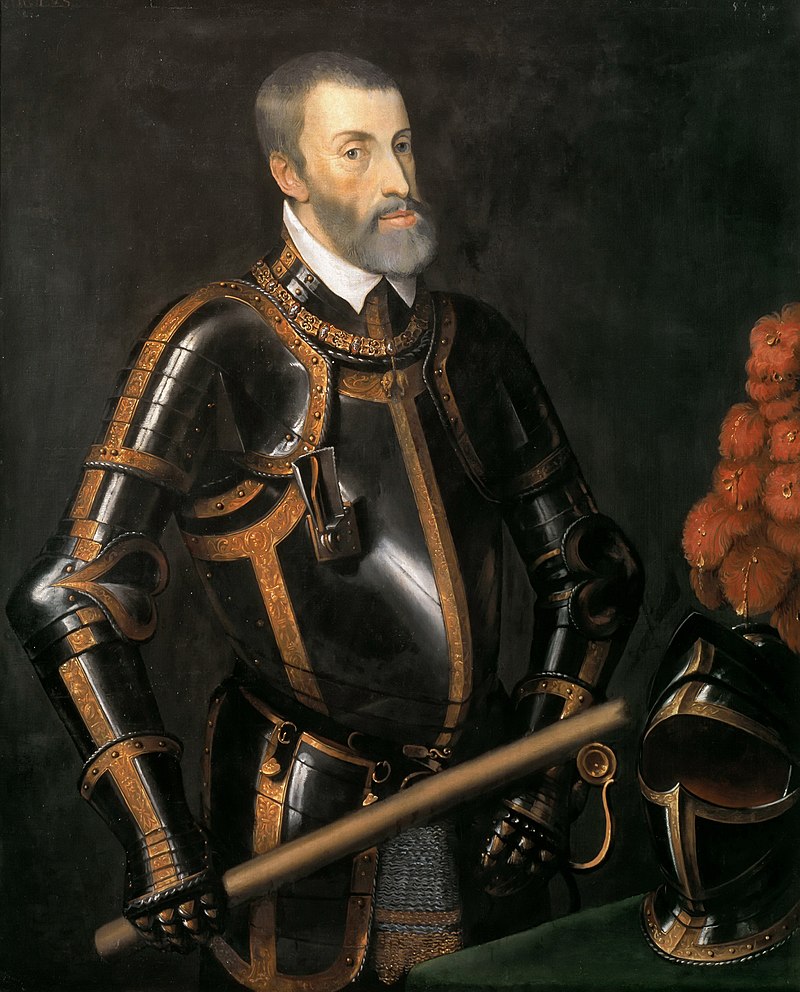Dear Mr Morrison,

Yours Sincerely
The People of Western Australia
Disordered Thoughts and Curmudgeonly Ramblings
Dear Mr Morrison,

Yours Sincerely
The People of Western Australia
It has recently come to my attention that filming for Guardians of the Galaxy Volume 3 has concluded and – in what can only be described as an appalling lapse of judgment – director James Gunn has failed to consult me on what retro songs should be used on the soundtrack. It’s inconceivable! What is the man thinking?
In the face of such madness I have no option but to post the songs that should be featured, in the hopes that Mr Gunn comes to his senses. So please enjoy what I am calling the completely unofficial Guardians of the Galaxy Awesome Mix Vol 2.5!
1: Run Runaway – Slade
It’s axiomatic that the opening scene of a Guardians film needs a kickass track and what’s more kickass than the rumbling drums and wailing guitars of Slade’s faux-Scottish anthem about fleeing in terror (and – for some reason -chameleons)? Hell, open the film by having the Guardians fleeing in terror from space chameleons, it’ll be downright diagetic! (Note: I may not actually understand what ‘diagetic’ means).
2: Our Man in London – CCS
Not only does this have exactly the kind of swinging big band sound the Guardian soundtracks are famous for, the lyrics talk about rocket ships and space-age heroes. It’s a natural inclusion!
3: Zero – Alastair Riddle
Is there anything more retro-futuristic than synthwave? Yes! The synthpop music of the 80s that synthwave attempts to imitate! And is there any synthpop more synth or more pop than hand crafted New Zealand synthpop? I say no, and offer this unfairly obscure gem by the David Bowie of West Auckland, Alastair Riddell, as proof!
4: Sugar Baby Love – The Rubettes
Every Awesome Mix needs a love song, and what better than this ridiculous bubblegum confection? Half the lyrics are “Bop Shawady, Bop Shawady-wady” and what could be more Guardians than that?
5: Prologue and Twilight – ELO
This would have worked spectacularly well at the start of Avengers: Endgame where Captain Marvel rescues Tony and Nebula, but the Russos unaccountably chose not to consult me. So I’m offering it to Mr Gunn instead. I mean Mr Blue Sky worked great in Volume 2, didn’t it? You can never have too much ELO!
OK, so that’s just five songs, but they’re five awesome songs, perfectly suited for the final installment of the Guardians trilogy. And on top of that I don’t work for free! If Mr Gunn wants to hear the rest of my suggestions (which definitely exist) we’ll have to strike some kind of deal. Have your people call my people James, I’m sure we can work this out!
As the turning of the year speeds us onward into winter the time has come for me to actually make a post. Don’t expect this to be a regular thing mind you, it’s likely only possible because I’ve taken a week off work and hence actually have the time to think.
Anyway, this week someone on Reddit had decided to compile a list of Adeptus Astartes war cries (yes, I’m on about Warhammer again, deal with it) and helpfully posted the same to the 40kLore subreddit. When browsing through this list I noticed something a bit strange – can you spot it?
In case you’re not an ageing Gen-Xer and the title of this post didn’t tip you off, it’s the war cry of the Genesis Chapter, who apparently charge into battle yelling “In too deep, against all odds brother!”. What immediately startled me about this can best be summed up with the inclusion of a couple of videos…
So, we are being asked to believe that the war cry of the Genesis Chapter just happens to be built from the title of a Genesis song, and a former-lead-singer-of-Genesis-Phil-Collins song?
Now, sure, Warhammer 40k is probably the most plagiarism-guilty IP in human history. It’s cobbled together from chunks of Dune, Heinlein’s Starship Troopers, the collected works of J. R. R. Tolkien, Judge Dredd, the generalised evil of Margaret Thatcher and dozens – if not hundreds – of other sources. There’s barely an original idea in the whole thing. But directly quoting prog-rock lyrics seems a little too on the nose even for Games Workshop. So what the hell is going on?
I started digging. The oldest reference I could find to the alleged war cry is on the Genesis Chapter page on the 40k Fandom Wiki – which immediately sounded all kinds of alarm bells.
Warhammer 40,000 has been a thing since 1987, and since then an absolutely titanic amount of background lore has been generated. Organising it all into a Wiki is the obvious management solution, and as a result there are a number of 40k Wikis on the web. The big three though are Lexicanum, 1d4Chan and the 40k Fandom wiki.
Lexicanum is – in my opinion – the most reliable as it insists that all information must be properly sourced. It can be a bit dry and academic though, being very much the “just the facts ma’am” 40k wiki.

1d4Chan (when it hasn’t gone offline, which it seems to do regularly) is an obscenity laced carnival of memes that – once you scrape off all the hyperbole – is often surprisingly accurate. It’s also the only of the big three to really include meta-information – that is to say info about the history and community of 40k . If you want to understand the hate directed towards C. S. Goto, or know why Matt Ward is your spiritual liege it’s the place to go. On the downside it’s not updated that much any more, and if not tempered with more reliable sources can easily delude new 40k fans into confusing memes and jokes (usually very dated memes and jokes – like those involving Matt Ward and C. S. Goto…) with actual lore (For instance the Death Korp of Krieg are not suicidal and they do not regard shovels to be their ‘cultural weapon’, and you cannot kill Orks by pointing a gun at them and shouting ‘bang!’).
The 40k Fandom Wiki… well, to be frank, I do not like it. Its moderation and sourcing rules are extremely lax – pretty much anyone can post anything they like there and it’s up to other uses to spot and correct it. Which brings us back to the Genesis Chapter…
On February 8th 2011 – yes, that’s over a decade ago folks! – some wanderer of the digital waste decided to have a bit of fun with the Genesis Chapter Fandom Wiki page and made a series of edits to the info box, which I shall display here as a before and after screenshot…

Such wit! Such satire! Actually, to be entirely honest, it’s exactly the kind of joke I’d make, but I certainly wouldn’t go and vandalise a wiki with it!
The joker’s changes were reverted pretty quickly, but whoever did it seemingly lacked the necessary knowledge of Phil Collin’s back catalogue to recognise the war cry as part of the prank, even adding quotes around it to standardise the format. And so it has sat there unchanged for 11 years, spreading through the fan community as the accepted war cry of the Chapter!
I may try to do something about this. Or I may not. All in all I suppose we should just be glad that the Genesis Chapter don’t charge into battle yelling “Billy don’t you lose my number!”

As is my way, I have once again become utterly captivated by a song. This time around it’s Zero by New Zealand’s own Alastair Riddell.
Now, some may say I’m late to the party, the song in question having been released 41 years ago, but I prefer to think of myself as making a deliberately delayed dramatic entrance. In any case I can hardly be blamed for not knowing a song that was only released in a foreign country and which (completely unfairly by the way) utterly failed to make an impact there. In any case it’s making an impact now, on me, and that’s what matters.
It is also my way to – when captured by a song – want to know the words so I can sing along and possibly even dance in an extremely undignified manner. These days this is pretty easy, as the lyrics to every song you could ever want are freely available online. Except it seems those of Zero. In digital terms the song barely seems to exist. This could not be allowed to stand, so I have done my best to transcribe it myself and present it here for the education and edification of the world.
Zero has a way, she’s often bad,
Plays round, I’m always sad,
She knows what to do,
She’s a royal pilot too, oh,
She stares into my eyes,
Should see her lover’s eyes,
She’s a light above,
A light to guide,
A light,
What she knows,
Commander Zero,
Hello Zero,
I want you Zero tonight,
Won’t you come in on my airwaves?
Commander Zero,
Hello Zero,
A special feeling today,
Well you ought to see the sparkle in her eyes,
Last night I dated Zero,
I wanted her to see,
That as no one else will do,
The one she needs is me,
She laughed and shook her head,
So foolish and serene,
She looked so beautiful,
Her flight suit was in green,
Commander Zero,
Hello Zero,
I want you Zero tonight,
Won’t you come in on my airwaves?
Commander Zero,
Hello Zero,
A special feeling today,
Well you ought to see the sparkle in her eyes,
Zero,
Zero,
No one knows like Zero,
She’s got the world in her hands,
Zero,
What am I going to do?
(What am I going to do?)
Commander Zero,
Hello Zero,
I want you Zero tonight,
Won’t you come in on my airwaves?
Commander Zero,
Hello Zero,
A special feeling today,
With your,
Strange hair and,
Strange eyes and,
That’s why I love you,
Oh-oh-oh-oh,
Oh-oh-oh-oh-oh-oh,
Zero!
Oh-oh-oh-oh,
Oh-oh-oh-oh,
Oh-oh-oh-oh-oh-oh,
Zero!
Oh-oh-oh-oh,
Oh-oh-oh-oh,
Oh-oh-oh-oh-oh-oh,
Zero!
Oh-oh-oh-oh,
Oh-oh-oh-oh,
Oh-oh-oh-oh-oh-oh,
His name is Mal-Mal-Malcador!
The greatest Sigillite!
No treasure too old, no psyker too bold,
Who’s that!? Malcador the Sigillite!
Well hello there! I’m Malcador, the last surviving member of the Ancient Order of the Sigillites. My friends call me ‘Mal’ but you can call me First Lord of Terra and second in command of the Imperium of Man. I make sure the Emperor’s will is done – when the big E says ‘jump’ we don’t even bother asking how high! (If we get it wrong he’ll let us know!) But it’s not all work, work, work in the Emperor’s service, no siree! We know how to have a good time too – isn’t that right Horus?
Mal… M-Mal… al…
Oh don’t mind him! He’s just trying to pronounce the name of one of the Lost Primarchs. Keep at it Horus, you’ll get it one day! Yes, we inhabitants of the Imperial Palace work hard, but we also play hard! As my good friend Constatin Valdor will agree! Get over here Constantin!…
Well, the hell-year of 2021 is over and done with and we can celebrate the start of hell-year 2022. Boo! Hooray! Boo! Hooray! Call me when you’re finished.
I did have big plans to get up super early this morning, get an Uber to the Camfield and enjoy the year’s first sunrise while walking along the river to Mends Street Jetty. But when it got to 1:00am and I still hadn’t fallen asleep I decided “screw it” and turned off my alarm. I’d rather start the year at least somewhat rested rather than try to get by on only three hours, no matter how good it might be get some healthy exercise and set an example to live up to for the next twelve months.
One thing I have done today is get my votes in for the Hottest 100. Rather embarrassingly it turns out that one of my favorite tracks of the year, MØ’s Nights With You, wasn’t in fact a track of the year at all. being released all the way back in 2017, so Cloudy Day by Tones and I got promoted up to my number 10 instead of 11. I also voted for Montaigne’s MBMBaM theme song My Life is Better With You which isn’t on the official list, BUT I DON’T CARE! My track of the year is Ziggy Ramo’s Little Things, and if that makes anyone uncomfortable then (to quote Phil Jupitus) Well fucking good!
Anyway, here’s the full list, alphabetically by artist…
So, on to calendar reform.
(What? You don’t consider how stupid our calendar is on January 1st each year? What’s wrong with you?)
It is a truth universally acknowledged by all right thinking people that the Gregorian Calendar is a hodge-podge of terrible ideas smothered in a layer of well meaning but equally as bad hacks intended to force it into some semblance of functionality. The majority of the problems stem from the irrational belief of the Ancients that the universe is (or should be) some kind of clockwork mechanism where the movements of the celestial bodies all mesh together into a grand yet simple pattern – as opposed to the reality that they’re big lumps of rock and gas that whiz around doing their own thing with no obligation to match the neat mathematical models we humans prefer.

As such, the period of rotation of our planet (a day) does not fit evenly into the rotation of our moon around our planet (a month) and neither the day nor month fit evenly into the rotation of our planet around the sun (a year). Building a calendar on the assumption that they do causes horrible problems and results in said calendar drifting away from reality until people are planting their crops in the middle of winter and starving to death.
(We correct for this kind of thing with tricks like leap days, which is where we save up all the left over bits of days at the end of a solar orbit and then shove them back into the calendar once they add up to a full day. This is actually a pretty good solution, although sticking them at the end of the second month is the kind of thing only a lunatic would consider sensible.)
The mismatch between the solar year (365.2425 days) and lunar month (29.53 days) is responsible for the horrible mess of our calendar months. Four of them are 30 days long, seven of them are 31 days and one is 28 days (or 29 when we need to shove in one of those leap days). This is stupid.
And to add to these problems we went and invented the week – a period of seven days that doesn’t match up with the month or the year. The result is sheer insanity, requiring complex calculations to figure out what day of the week a given date falls on, and making vast sums of money for the calendar printing industry.
Enough! I cry! A new calendar is desperately needed, and I – in my supreme intelligence (not to say arrogance) – am the one to create it!
As such I am pleased to here present the Wyrmworld Calendar!
The Wyrmworld Calendar (WYC) consists of 13 months – the twelve we currently use plus Hektober – each of exactly four weeks long (28 days). The first day of each month – and the first day of each year is a Monday, so you never need to buy a new calendar.
This comes to 364 days, which leaves 1.2425 days over a year. The one full day is Yearsend – a special day inserted between Sunday Hektober 28th and Monday January 1st that isn’t part of any month and doesn’t have a day of the week. The remaining 0.2425 days are saved up as per the current leap year system, and when a leap day is required it’s added as Leapday between Yearsend and January 1st.
So, that takes care of the years, days and weeks, but how do the 13 months of the Wyrmworld Calendar line up with the moon? Well, they don’t. The moon makes everything way too complicated and can go frunk itself. We are human beings, not fish!

With the cycle of days figured out we now need to set an epoch. The Gregorian Calendar Epoch – BC/AD or BCE/CE – is just terrible, You have to count backwards for anything interesting in ancient history and then you have to account for there being no year 0. How old would Cato the Elder be if he were still alive today? He was born in 234 BCE so we need to take the current year of 2022 and add 234 and then take away 1, so he’d be 2,255. What year would he have had his 724th birthday? So we take 234 away from 724, but then we need to add 1, so 491 CE? THIS IS CONFUSING!
The sensible answer is to push the epoch back beyond recorded history so all the numbers that matter are in the positive. Cesare Emiliani’s Holocene Calendar does this with the neat trick of setting the epoch to 10,001 BCE, meaning we just add 10,000 to the current CE/AD year. The Wyrmworld Calendar is not afraid to steal good ideas, so we will do the same! So the current year is 12,022 WYC and Cato the Elder was born in 9,767 WYC. Easy!
(The battle of Thermopylae was 9,521 WYC in case you were wondering…)
Finally, exactly when is the new year? We currently celebrate new year at an arbitrary point in the Earth’s orbit and this offends me. The new year should be tied to something meaningful. The logical choice is a solstice or equinox. To minimise confusion we’ll use the (Gregorian) December solstice, and for reasons of convenience reference the Gregorian 2021 solstice of December 21st. The solstice shall mark the last day of the year, with the next day January (WYC) 1st.
So, adding it all together today is Thursday January 11th 12,022 WYC. I expect the world to start using this far superior calendar immediately!
(Happy new year!)

“Sir, I need you to turn the cogitator off, recite the Third Canticle of the Omnissiah, then it on again.”
“Yes, I know you’ve already done that, but please, humour me and do it again.”
“Are you sure you’re turning off the cogitator and not just the holo-projector, the cogitator should take at least a minute to…”
“Sir, if you continue to use that kind of language I’ll end this call and inform the Inquisition.”
“Thank you. Alright, the cogitator is the large, glowing cylinder covered in purity seals beneath your desk. You should be able to see a brain suspended in the fluid.”
“No… the brain definitely should not have ‘mushrooms’ growing out of it. Are the purity seals intact?”
“Why in the name of the God Emperor did you remove the purity seals?!”
“Sir, that noo-mail was a hacking attempt from the Dark Mechanicum! Didn’t you read the security bulletin!?”
“Alright sir, disconnect the cogitator from the power feed and wait by your workstation. An Ordo Malleus support team will be with you shortly…”

What foods are surprisingly healthy?
The flesh of the giant aquatic Brazilian centipede
What is the fear of the common folk?
The Wolf, the Devil and the Northman
What are your thoughts on Kangaroos?
Tasty if properly prepared
Do people really leave shoes on inside private homes? If so, why?
Well, you see the world don’t move to the beat of just one drum. What might be right for you, may not be right for some.
How is Pete Davidson even remotely funny, entertaining or famous?
How dare you criticise the fifth Doctor that way!
If you were Santa, what would you have named your reindeer?
Slayer
Pantera
Megadeth
Metallica
Black Sabbath
Dio
Judas Priest
Enya
What is the sexiest sport and why?
Brockian Ultra-Cricket. If it’s not sexy as hell why do they build those giant walls around the stadiums to stop us from watching?
What are polite ways of insulting someone without using curse words?
“You, sir, are a pathetic excuse for a hotel manager!”
What is the best thing to have ever happened in the world?
Fabio getting hit in the face with a goose on a roller coaster.
What do you call a corporate mascot that betrays it’s own fate (e.g. a happy pig advertising a BBQ)?
A class traitor!
What never fails to make your blood boil?
Temperatures in excess of 100 C
Who wants to play fort?
Me! Strange objects fall from the sky because they’re stored in an anti-gravity zone I call the Super Sargasso Sea and furthermore…
Oh, sorry. Wrong kind of Fort.
If you had adequate financial resources, how many kids would you like to have?
If I had the financial resources to have a kid, I’d get a fish instead. They’re a lot less work.
Which actor is perfect for a role like Batman?
Gilbert Gottfried. “I am the NIIIIIGHT!!!“
What is most annoying thing or concept of 2021?
I would like to monetize your question as an NFT
According to the simp ideology, what exactly makes a female immune to being wrong about anything?
Now listen. No one will ever take you seriously if you use terms like ‘simp’
What’s your trick to get laid?
I sit back and wait for the ladies to come to me! It’s gonna work any year now!
Where did we come from? Who created the creator(s)?
I dunno. The Coast Guard?
What is your favorite time zone?
Old fashioned Saudi Arabian solar time! Reset your clock to midnight at sunset every day and screw the consequences!
Ex nihilo nihil fit
Parmenides, stop telling the universe what to do!
Who killed JFK?
JFK killed JFK. There was time travel, a robot, and a humanoid creature evolved from a house cat involved. It was complicated.
What is the squirrel in your pants doing?
That’s the squirrel’s business, not mine.
What is an omega male?
Something made up by people who inexplicably believe that a fatally flawed description of wolf behaviour applies to human beings.
What happens in the mens’ bathroom? Anything particularly special?
In the mens’ bathroom…
What would be a good name for the prank where a bunch of teenagers sneak up to drive through window and spray a bunch of bear mace inside and run off laughing while one of their friends records from inside for social media?
Conspiracy to commit Criminal Assault
Who should be the next James Bond?
Gilbert Gottfried “Shaken not STIRRRRED!!!“
What screams upstairs all night?
Nothing. Did you forget to take your medication again?
What is the biggest red flag you’ve seen on a first date?
Well there was that time I met up with a girl at an exhibit on the Soviet Union…
Which way do you turn a doorknob?
One way, and then if that doesn’t work, the other way.
Where is your Elf on the Shelf currently?
Burning in Hell along with all the other surveillance state snitches.
What are your predictions for 2022?
The sky will crack open and Liberace – 40 feet tall and luminous – will descend on a silver staircase and play the greatest hits of Macklemore on a steam calliope the size of the Queen Mary.
What do you think of waffle cones?
I think it’s good that they figured out how to make artificial ones so they didn’t have to keep harvesting them from quornimals.
Why do you hate Caillou so much?
God hates him enough to give him cancer. Who am I to argue?
Do you think your country would be a better place if your representatives could have fist fights?
It worked for Taiwan!
What are your views on “Climate Change”?
Can you have a ‘view’ on established fact?
If you could eat anything in the world right now, what would you eat?
The heart of a king!
What are some ways we can prevent white genocide?
You can start by getting off Telegram and joining the real world.
How are Elon Musk and Tony Stark different?
I’m not aware of Tony Stark ever calling someone who contradicts him a pedophile.
What’s the biggest mistake rookies make during their first astral projection?
Talking to the machine elves.
A child asks you where babies come from. What is your response?
Ask your mother
What is your stance on making the bed when you get up?
All that does is create a haven for dustmites!
What do you think about the US Democratic Party?
The lesser of two evils
What is a song that is so funky it makes you say “Dayam that’s funky!”?
Sounds like you’re hankerin’ for some Lakeside!
What are your favourite things about living alone?
I can walk around the house nekked!
Why aren’t you following your dreams?
I’m waiting for Tyler Durden to appear out of the night and threaten to shoot me if I don’t.
Michael Myers is after you but you can’t go to the police or the hospital. Where would you run?
Dr Suess’s house. After The Cat in the Hat they set up 24 hour armed security to stop him getting in and making any more movie adaptions.
What thing is not worth paying attention to?
The Manosphere
What are more complicated versions of the trolley problem?
Replace the people on the tracks and in the trolley with simultaneously alive and dead cats sealed in boxes.
Who do you think will be the new Prime Minister of Canada in 2023 if Justin Trudeau steps down?
Yukon Cornelius
What celebrity screams future murderer?
Frankie Muniz. “Memory issues” huh? Very convenient…
What would you do if your neighbour asked to lick your feet?
Call the police.
Realistically, what do you think a Necrocratic government would be like?
Bulk ouija board requisitions for the Civil Service.
You have the chance to change one animals name, which animal? what would you change it to?
Hedgehogs will henceforth be named “Spike Chil’en”.
What are your thoughts on all the genders out there?
Gender is made up, so why not custom-craft your own?
What crime is always ok to commit?
Punching Nazis
What are your hangover cures?
You can never be hungover if you’re never sober!
Whats the most rebellions thing yoh did as a kid?
Who is Yoh and why do you assume that I know anything about their childhood?
What TV show has been almost totally forgotten?
Mina Guldskor, a short lived Swedish adaption of The Greatest American Hero that ran for half a season in 1984. Its theme song did go on to win Eurovision though, which is something at least.
What is your opinion on the white lighter celebrity conspiracy?
There’s only one White Lighter and that’s Brian Krause!
How do you confess to a girl that you like her?
I leave a brief and ambiguous note then retire to a reinforced concrete bunker 500 feet underground in a neighboring country where I curl up into a fetal ball and rock back and forth in a corner while hyperventilating for at least four months.
What are the benefits of having one arm?
Automatic pre-selection for when the drummer from Def Leppard retires.
How do you kill a tree so it looks like nature did it?
Call up the local cops and tell them about your plans. They’ll be able to provide all kinds of useful advice!
What’s a random fact you’re just waiting to bust out?
David Farrant and Sean Manchester are the only two people officially declared to be “1970s weirdos” by the British Office of Communications.
You can make any Avenger pregnant to add drama to any of the MCU films. Which Avenger is it and in what movie?
One of Bruce Banner’s experiments goes seriously wrong in 2023’s The Fertilizable Hulk
Skeptics, how do you explain (reputable) psychics and mediums?
Find one that’s actually reputable and we can talk.
What do you need to get off your chest?
The withered, pale, monkey-like thing that squats there all night while I’m trying to sleep.
What is the origin of milk?
Milk is produced by wasps repeatedly chewing up then regurgitating wood.
How did you get over the perfect match?
I never have. Why can’t more gameshows feature wise-cracking robots?
What do you call a male lady bug?
Gary
How much attention do you pay to the cycles of the Moon when planning your week ahead?
The moon? I ain’t no salmon!
What idea of Europe do you have?
A bunch of tiny countries, all wedged together, trying to do their best.
You discover the gate to Hell, what do you do?
Charge admission!
What country do you think is making content of worse quality as companies try to appeal to them?
If the big media companies don’t stop pandering to San Marino, I swear to god…
What goes through your mind when you hear someone say the word “cuck” as an insult?
I write them off my list of people to take in any way seriously.
Screw zodiac signs! What’s your starting pokémon?
Pokemon world is the world of the demonic!
If you could telepathically broadcast a message to the whole world at once, what would you broadcast?
Och… kill… Dagless… mon
What will trigger the Apocalypse?
Some Trumpist will do it to own the Libs.
What do you think King Alfred the Great would think of the United Kingdom today?
He’d be pleased to see how big it was, but pissed off that the royal family is French.
What’s the most wholesome conspiracy theory?
Dogs are benevolent interdimensional entities sent to guide us from the Element-12 timeline. Their innate wisdom has been lost by selective breeding but can be re-awakened by breeding enough mutts.
What are your thoughts on Michael Jackson appearing naked in your bed at night?
Is that the kind of thing that happens to you regularly? You might want to change rooms or something.
What do you think about the proposal to allow marriage with plants?
Who the hell let Poison Ivy into Congress?!
What’s something the elite doesn’t want us to know?
The average car will run on consommé, but you have to be careful about getting parsley stuck in the carburetor.
Given how every AI experiment in public becomes a Nazi or hates people where do you see this tech going?
Using the internet to educate an AI is no different to using the internet to educate a human kid. If you don’t supervise it and give it context for what it’s seeing you end up with Logan Paul.
What is the name of the symbol on book cover of Irresistible forces by Danielle Steel?
It’s the sigil ‘odegra’ from the language of the Black Priesthood of Ancient Mu and means “Hail the Great Beast, Devourer of Worlds”
What is so bad about kpop?
Nothing. It’s just that it’s new, and it’s popular with kids. Therefore everyone who isn’t a kid any more hates it on principle.
What are your personal four food groups?
Cheese, Chocolate, Bread, Cardiac Medication
In the USA, Thanksgiving is celebrated on the 4th Thursday of November no matter how close it falls to the end of the month. What would be a better way to determine when to have Thanksgiving?
Surely there’s some kind of rodent that can be used to determine the appropriate time?
What’s the best thing to get at McDonald’s?
Out.
What says “Welcome to West Virginia” more than anything?
The Huntington Tarantula Parade!
What is the final concentration of ampicillin in the plates containing selective media – given that the volume of LB in the plate is 25 mL, the stock concentration of ampicillin is 100 mg/mL and you add 25 ul of this to each plate?
Pepsi?
What’s the most absurd hospital bill you’ve ever received?
Bill? I live in a country with a real health care system.
How are Cheese-Itz so good?
They’re manufactured from skin scrapings harvested from an alien being captured by John Harvey Kellogg in 1871. The already mentally unstable Kellogg was badly affected by the exotic radiation emitted by the creature, leading him to conclude that it was an angel and that consuming its flesh could cure ‘the vile sickness of onanism’. While most of Kellogg’s original alien-based recipes are no longer followed, “Angel-Scrapin’s” were added to Cheez-Its after the brand was acquired by the Kellogg Company in 2001, causing a boom in sales due to their highly addictive nature. The ‘angel’ has kept in a secure facility – designed by Enrico Fermi – beneath Kellogg’s Battle Creek headquarters since 1947.
Which Generation became confused about Genders?
Whichever decided each person only has one, and that there’s only two options for it.
Why are comdoms flavoured?
They were originally developed as an emergency food source for the military.
What’s the dumbest way you could spend 1 million dollars?
Penny whistles and moon pies.
Which is QAnon’s most ridiculous belief?
That Donald Trump gives a shit about their welfare.
Should we be allowed to wear pajama pants at school?
No! If we don’t have standards we will devolve into beasts!!
People who say stuff like “out of sight, out of mind”… when will you get with the times?
But I gotta keep my body tight!
God gives you one power, what is it?
The power of… *consults Catholic Catechism* free will?! What a rip off!
What is something that doesn’t belong on earth and it feels too weird?
Deep sea spider crabs. Those things just ain’t right!
People who work or once worked at Disneyland, what is the creepiest thing you have seen there?
At night they let the real Mickey out. There’s a reason the park has a system of fortified tunnels.
What is the most disrespectful thing a wedding guest did that they mistakenly thought went unnoticed?
I invited this one guy to my wedding and he spent the entire thing outside talking to this crazy old sailor!
I haven’t yet decided what I’m going to vote for in the Hottest 100 this year, but I have a list of candidate tracks and have thus decided to force them upon everyone while I make up my mind. So here, in no particular order, I present the UNQUESTIONABLY (by which I mean ‘extremely questionably’) best songs of 2021!
Let’s go dreaming of blue skies in California with BONES – TELENOVA
A bit of 90s post-grunge indie feel with SMILE – WOLF ALICE
The new theme for MBMBaM by one of Australia’s own. MY LIFE IS BETTER WITH YOU – MONTAIGNE
Some laid back, Beatlesque vibes with I’M FINE – ASHE
This is just straight-up good music. HOUSE BURN DOWN – KING PRINCESS
Always was, always will be. Sovereignty was never ceded. LITTLE THINGS – ZIGGY RAMO (feat. PAUL KELLY)
The kind of party track we could all use a bit of after this year. CLOUDY DAY – TONES AND I
We went to California earlier, now let’s hop across to COLORADO – MILKY CHANCE
When that base kicks in… LIVE TO SURVIVE – MØ
One of our best musical story tellers. BRUISES – RUBY FIELDS
The man deserves a good amount of the criticism he gets, but remember that he’s mentally ill, AND that he can still put out an amazing bit of music now and then. JAIL – KANYE WEST
So rude!! But it’s catchy as hell and that’s what matters. WET DREAM – WET LEG
Well it sure sucks to be you JOSH – PEACH PRC
A real soulful one here. NIGHTS WITH YOU – MØ
Another very catchy track. HURTS TO LOVE YOU – CARLA WEHBE
OK, now I’m off to buy some last minute supplies, fully masked as the virus has got into the state just in time for Christmas. Watch out! COVID’s about! But before that – given what day it is – I must follow my yearly tradition, even though it has nothing to do with the Hottest 100.
Happy Christmas Eve ya filthy animals!
For probably the last 25 years a fragment of music and a snatch of lyrics have been haunting the back of my brain.
It’s an energetic piece. The vocalist sings words along the lines of You can roo-ooo-ooo-oam in your own way with a four note descending scale on “roam”. Then there’s a rather 80s style guitar riff, and the lyrics repeat – You can roo-ooo-ooo-oam in your own way…

Now in those long ago days before YouTube and Google it was actually really hard to identify a song. If you wanted to look anything up you needed to go down to the local library and search through books, and while it was trivial to find information on, let’s say, Emperor Charles V of Spain, there were very few, if any, books cataloguing song lyrics. And if you did manage to find a book of song lyrics, how could you search it for a random snatch of words from the middle of a song? There simply wasn’t a way to do it.
So my only option was to rack my brain, hoping that some random neurons would connect in the right pattern to throw up some more details. And occasionally, over the years, they did. For instance, I was quite certain for a while that the song had to be “Roam” by the B-52s. I mean, the word ‘roam’ is right there! Careful listening to the radio and the eventual coming of digital music meaning the radio no longer had to be relied on however eventually showed that my random neurons were wrong, with the mysterious phrase appearing nowhere in the work – for all that I could hear Kate Pierson belting it out in my head.
With that possibility eliminated my brain went back to brooding and eventually suggested Transvision Vamp, who I had – frankly – completely forgotten even existed. Checking out their their discography led me to Baby, I Don’t Care.
Which was a slightly better fit – the backing vocals in the chorus actually sounded kind of right – but the bit I remembered still wasn’t there!
So I abandoned the quest. I decided that my brain had smashed together elements from the B-52s, Transvision Vamp and lord knows what else to create an entirely fictional fragment of music that never existed in the first place.
Oddly enough I’d been in this situation before with another fragment of music hiding out in the back of my brain. For years I was haunted by a small piece of violin that I was certain came at the start of a song, and spent just as many futile hours trying to figure out where it originated. I eventually concluded that it was a distorted memory of the start of David Bowie’s Sorrow and remained convinced of this until one wonderful morning when I heard it playing over the radio in the bakery opposite Bayswater railway station like some glorious beam of sunshine bursting into the greyness of the day.
I could only make out fragments of it – not enough to identify the song. But I heard enough fragments to know that there was only one band in history who could pull off such a combination of orchestra, synths, electric guitar and overlayed vocal harmonies, and later that day a search through the works of ELO revealed that the song that had been haunting me for decades was Sweet Talkin’ Woman.
So, imagine my shock and delight when on Sunday, doing my weekly grocery shopping in the Morley branch of a major supermarket chain, I heard the snatch of music that had eluded me for so long!
Yes they ri-ii-ii-ise in their own way! Yes they ri-ii-ii-ise in their own way!
It was history repeating! Another musical memory I’d decided was false unexpectedly revealed as genuine in a place of business! I found my way to one of the ceiling speakers and stood beneath it, memorising as much of the lyrics as I could make out over the hustle and bustle of the supermarket.
As soon as I got home I leapt onto the internet and started frantically typing in lyrics. In no time at all I had it pinned down and discovered that the song that had been haunting me for a quarter of a century was…
…by Daryl f’ing Braithwaite.
It’s Rise – the title track from Braithwaite’s 1990 album.
I was, and remain, not happy. And what’s even more embarrassing than being haunted for decades by the lead singer of Sherbet is that on hearing it I instantly remembered about 90% of the lyrics.
I’m honestly starting to suspect that the reason the normal people fry the memory centres of their brains with alcohol is specifically to avoid this sort of thing.